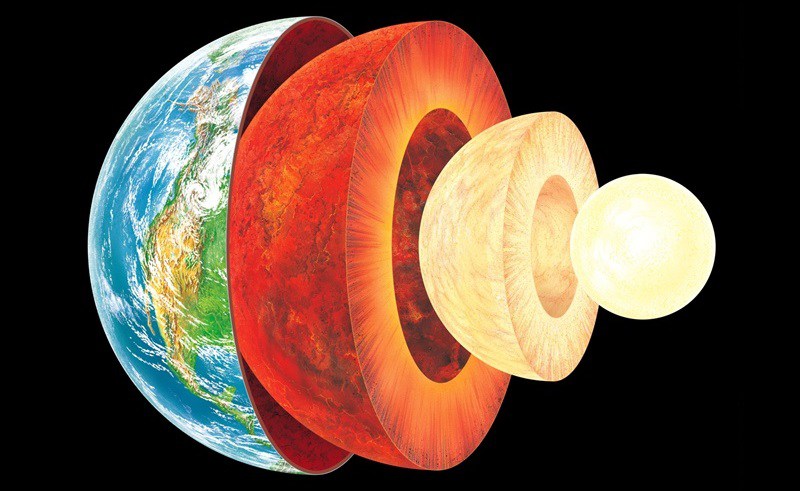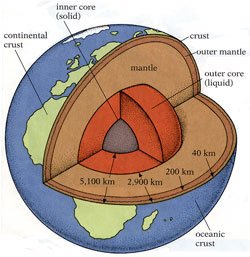How the earth solidifies
(NC & T) James Wookey is the lead author of the study
The solid inner core of the Earth began to form more than a billion years ago, when the liquid iron core that surrounds it began to solidify. Since then it has grown to reach a radius of approximately 1,200 kilometers. But the difficulty to study it lies in the thousands of kilometers of rock that separate us from it. As a result, we know more about the surface of other planets than the depths of ours.
However, scientists have a powerful tool to study the architecture of the Earth's interior. When large earthquakes or powerful explosions are triggered, vibrations (like sonic waves) travel across the Earth and seismometers can detect them at great distances, even on the other side of the planet. By studying the characteristics of these waves, such as how long they take to get to the instrument, and how strong they are, scientists can infer many things about the interior of the planet.

The most recent advances in seismology have resulted from the simultaneous observations of these waves using a very large number of instruments in dense networks. In the present, the largest of these networks is the Japanese Hi-net.
An extra benefit of this network is that the data can also be used to study the interior of the Earth at great depth, looking for the weak vibrations that pass through the core of the planet. One of these very subtle signals is the seismic wave called PKJKP. The properties of this wave contain a treasure trove of data about the inner core of the Earth.
In addition to obtaining direct evidence of its strength, the team observed evidence of "texture" in the inner core iron. This can reveal the patterns left by the solidification process of the liquid iron of the outer core.
More observations like this will allow seismologists to begin to understand these patterns and what they imply about how the deepest part of our planet has changed throughout its history.

The inner core (the innermost part of the Earth's core) fuses and solidifies simultaneously due to the circulation of heat in the rocky mantle that covers it, according to the results of a new investigation.
What was discovered in this study could provide crucial clues to find out how the inner core was formed, and how exactly the outer core (the outermost part of the nucleus) acts as a kind of dynamo, generating the planet's magnetic field.
In many ways, the origin of Earth's magnetic field remains a mystery to scientists, as Jon Mound reminds us of the University of Leeds, in the United Kingdom, and a member of the research team.
Faced with the impossibility of going to collect samples at the center of the Earth, scientists have to use measurements made much higher, as well as digital models, to try to get an idea of what is happening in the nucleus.
The new model provides a fairly simple explanation to some of the measurements that have intrigued scientists for years. It suggests that all the dynamics of the center of the Earth is in some way linked to plate tectonics, which is not too evident judging only by the observations made from the surface.
Congratulations @lucyvalera! You received a personal award!
Click here to view your Board
Congratulations @lucyvalera! You received a personal award!
You can view your badges on your Steem Board and compare to others on the Steem Ranking
Vote for @Steemitboard as a witness to get one more award and increased upvotes!